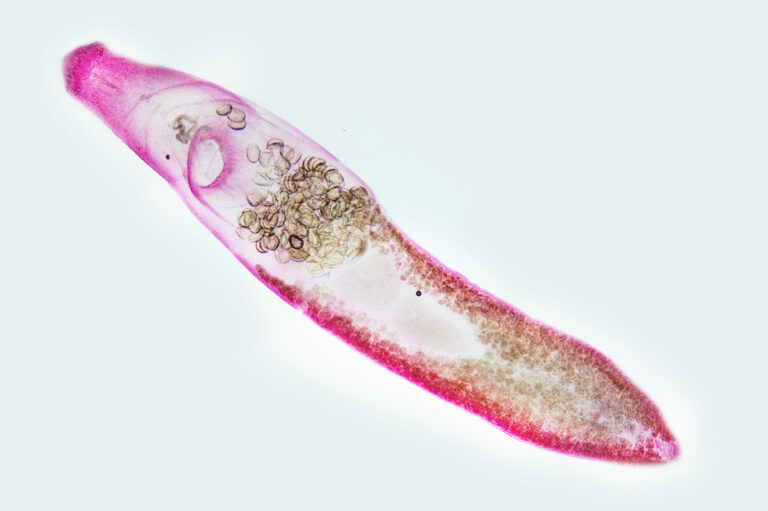Isthmiophora melis

Order: ECHINOSTOMIDA
Family: ECHINOSTOMIDAE
AREA OF ORIGIN: EUROPe – ASIa – NORth AMERIcA
Hosts:
Vertebrates
Vertebrates
Istmiophora melis is a fluke species that is distributed in Europe, Asia, and North America. There, the adult worms parasitize the intestines of various vertebrates, including humans. Within its life cycle, this parasite utilizes two intermediate hosts. The first intermediate host is the great pond snail Lymnaea stagnalis, while various species of amphibians and freshwater fish serve as the second intermediate host (Radev et al., 2009). Typically, the infection with flukes occurs through the oral ingestion of the larval stage (Caspary et al., 2006).
Human Pathogenicity: Infection with the fluke Istmiophora melis in humans leads to an increase in eosinophilic granulocytes in the blood (eosinophilia) (Dönges, 1967).
Exemplary Sources
-
Dönges, J (1967)Der modifizierende Einfluss des Endwirtes auf die Entwicklung des Darmegels Isthmiophora melis (Schrank 1788). Zugleich ein Beitrag zur taxonomischen Klärung des Genus Isthmiophora Lühe 1909 (Trematoda, Echinostomatidae). In: Zeitschrift für Parasitenkunde (Berlin, Germany), vol. 29, n° 1, p. 1–14.
-
Radev, V et al. (2009)Reexamination of the life cycle of Isthmiophora melis (Trematoda: Echinostomatidae) on material from southeast Europe. In: Parazitologiia, vol. 43, n° 6, p. 445–453.
-
Caspary WF et al. (2006)Infektiologie des Gastrointestinaltraktes: Springer Berlin Heidelberg, p. 363–372.